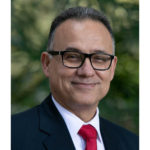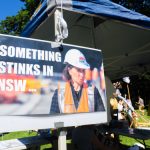Demerge Mega-Councils: An Interview With Residents for Deamalgamation’s Andrew Chuter
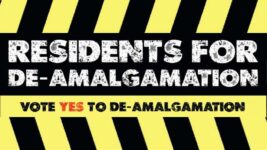
The 4 December elections for Inner West Council were different to the votes held at all other 127 local government areas in NSW, as the constituents in Sydney’s inner west had an extra optional question to deliberate upon, and that was whether they want to have the council demerge.
The Inner West Council was formed on 12 May 2016 due to the state government-imposed forced merger of Ashfield, Leichhardt and Marrickville councils. And the question put to the residents was whether they’d prefer a restoration of the three smaller councils.
The “Yes” vote was successful. An overwhelming 63 percent of those that voted want to see a return to smaller, and hence, more representative local governments.
And this has sent a clear message to the newly incumbent Inner West councillors, as well as to the Perrottet state government, especially as the non-compulsory poll saw 97 percent of constituents partake.
Indeed, many residents living in the other merged mega-councils have been so impressed by the inner city Residents for Deamalgamation campaign, that they’ve formed the Demerge NSW Alliance (DNA), which is pushing for the further demergers amongst the recently joined local governments.
A failed policy
The NSW government legislated the forced amalgamation of 44 local governments into what have been described as 20 new mega-councils.
Then premier Mike Baird told reporters at the time that the mergers would likely save $2 billion over the next two decades. However, due to widespread opposition to the mergers, plans for further council amalgamations have since been dropped.
The Save Our Councils Coalition (SOCC) released its Council Amalgamations a Sea of Red Ink report in early 2019, in which the grassroots group outlined that instead of seeing monetary benefits, the new local governments were under financial strain, even with state merger grants to assist them.
“SOCC’s view is that the NSW state government completely misjudged the effects of the decision on local electorates,” the report reads. “This view is reinforced by post-amalgamation by-election results with large voting swings against the government.”
A warning on what’s to come
Residents for Deamalgamation spokesperson Andrew Chuter was one of the key campaigners behind the Inner West Council demerger campaign. And he warns that if constituents don’t proactively pushback on government reforms, there are more detrimental changes on the horizon.
Right now, property developers make contributions to cover infrastructure in local government areas where they operate. However, the NSW Coalition government is planning on funnelling this revenue into a NSW Treasury-controlled fund, with no clear indication on how it will be distributed.
While last week, another reform was spruiked that would see limits imposed upon local council deliberation times regarding planning proposals, with the NSW government intervening if breached, in an obvious move to favour the want of developers over community concerns.
Sydney Criminal Lawyers spoke to Residents for Deamalgamation’s Andrew Chuter about what can be expected following the successful “Yes”vote, the often-forgotten importance of having strong local council representation, and the broadening of the campaign to see mega-councils demerged.
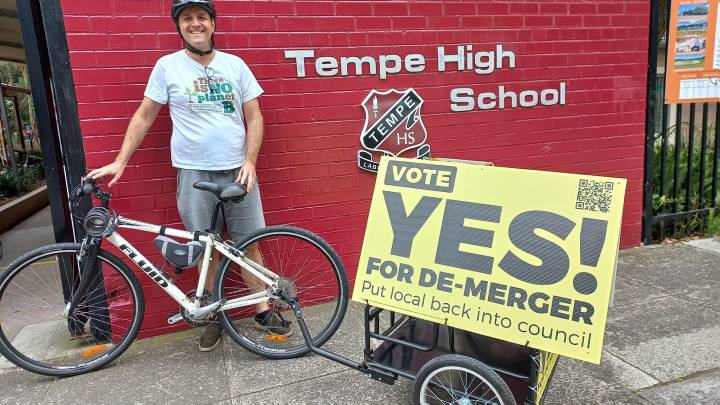
During the recent NSW local council elections, Residents for Deamalgamation campaigned for the “Yes” vote in regard to a second non-binding question put to the constituents of the Inner West Council local government area.
The question posed was whether locals want their council de-amalgamed back to the former three council areas of Ashfield, Marrickville and Leichhardt.
Over 60 percent of the constituency voted yes to having the three prior councils restored. Andrew, you were a key campaigner on the issue. So, how do you consider the outcome? And what’s the next step?
The outcome was a resounding yes: even the critics had to admit it was strong.
One thing to note is that the variation from the overall 63 percent result across the former three local government areas was only plus or minus 5 percent. That suggests that local differences in council performance played a relatively little part.
It’s not like we can say if only the Inner West Council would pick up its game a bit in Ashfield, people would be happy.
Even if all that variation was due to changes in rates, that suggests that rates were only a small part of why people voted to demerge.
The next step is to make sure that the newly elected council follows through on the peoples’ voice. This should be the first order of business after the election of the new mayor and deputy mayor.
The way forward, according to the legislation, is to write a business case to the new local government minister outlining the reasons for demerger.
This case should be put together by a team of independent experts willing to put their names to the case.
It definitely should not go to big accounting firms that view everything from the same narrow and detached perspective that got us into this mess in the first place.
A good place to start would be the UTS Centre for Local Government, which is headed by Professor Joseph Drew.
The proposal to run the non-binding de-amalgamation poll during the December 2021 local council election was made by the Socialist Alliance Party.
Local Labor and Liberal councillors tried to block it from happening at every step of the way.
So, what would the benefits of restoring the three former councils covering smaller urban areas be?
Put simply, it’s to put the local back into council. We believe local councils should be in close consultation with residents about the decisions they make.
Since Mike Baird’s 2016 amalgamations, the council agendas have become impossibly long.
Any residents wanting to speak to an item only get a few minutes and then a decision may not be made until 11 pm.
This is a far cry from the concept of “open council” that was fostered in Leichhardt back in the days of Nick Origlass and Issy Wyner.
Residents should have the opportunity to respond to councillors and have a chance for real debate.
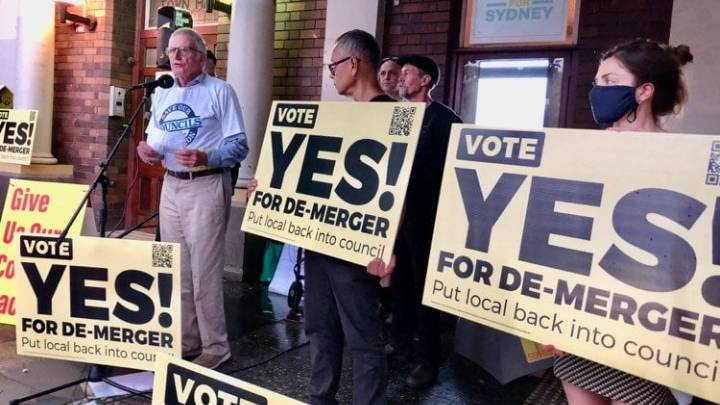
As you’ve just mentioned it was the Baird government that announced it was merging 44 local government areas into 20 new mega-councils in May 2016. In your opinion, what was the reason for this?
The amalgamations were always a way to strengthen the hand of big property developers to push through their pet projects.
This was even recognised by the Labor councillors in 2016, who agreed that the Inner West Council was amalgamated in order to bypass opposition to WestConnex.
By de-amalgamating, we have a chance to shift the balance back towards residents. If we don’t we can expect another tranche of horrible legislation.
Already, we have seen what’s waiting in the wings. There are attempts to take away control of developer contributions for local improvements back to the state government, where we are likely to see even worse pork-barrelling than the sports rorts and other recent funding scandals.
And now they’re talking about intervening to take control over development decisions from councils.
The success of the inner west poll led Demerge NSW Alliance (DNA) convenor Grantley Ingram to remark that the result shows the community does care about local government.
Can you talk a little on why local councils are important, and why this needs to be reaffirmed?
All across the globe, we are seeing people dissatisfied with politicians. In the COVID response here and overseas, it’s been city and state governments that have been taking the lead with national governments sadly lacking.
We can see it also happening with the climate emergency, where local jurisdictions are moving to net-zero emissions and sustainable projects decades earlier than national targets.
We could also do the same with the housing affordability crisis by councils directly funding council-owned and operated housing.
Local democracy matters, and could be more powerful and more progressive, but only if we value it, get involved and use it to our collective benefit.
The Demerge NSW Alliance (DNA) formed in September, with residents from the majority of the merged mega-councils launching a larger campaign calling for de-amalgamation.
Some of these areas are hoping to hold their own polls at upcoming byelections early next year.
What are you expecting to happen here? How does this development bode for your localised campaign?
There are many regional areas that are angry about the forced amalgamations, and pro-demerger candidates will be running in elections.
This presents a big threat to the NSW Liberal Nationals government. That’s why they have agreed to the release-valve of the small changes to the Local Government Act to provide a pathway to demergers.
As such, it’s great to see the shadow minister for local government, Greg Warren, speak at our recent rally and support the campaign for demergers. But it’s troubling that Labor has not been consistent when it comes to the Inner West Council.
We hope that this united group, DNA, will make all the political parties stand up and take notice.
It could be a defining issue in the 2023 state election. But voters will be watching very closely and both Liberal and Labor have a poor track record when it comes to promises on council amalgamations.
Regional areas are watching the Inner West Council poll closely and want the demerger to succeed. They want to use our campaign model for their own areas and it’s giving them hope.
We’re seeing a positive exchange of support and volunteers across the state. We even got the Inner West Council campaign onto the front cover of the Gundagai Independent.
This runs counter to the false narrative of inner-city latte-sippers being out of touch with the regions.
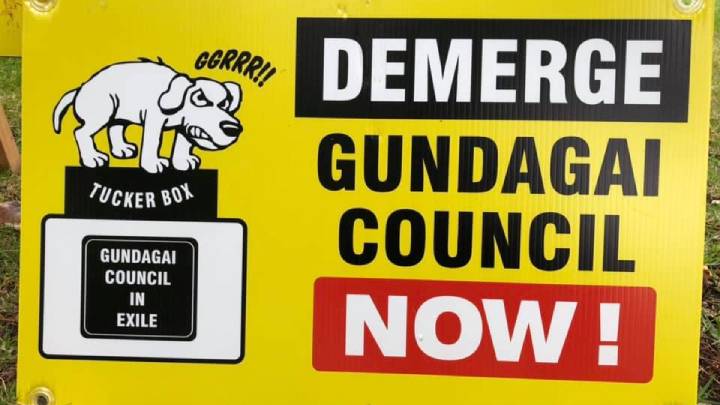
And lastly, Andrew, as you’ve mentioned, the Local Government Act 1993 (NSW) contains provisions for local councils to de-amalgamate.
Given the successful vote in the inner west, and more votes being set to take place, how do you envisage potential reforms will come about from this point on?
It’s possible in the lead up to the March 2023 state election, that if the government is trailing in the polls, they may agree to a number of de-amalgamations.
But it will be up to people power to push and make that happen. That is what we learnt from all the work and the team building involved in the successful poll result in the Inner West Council area.






